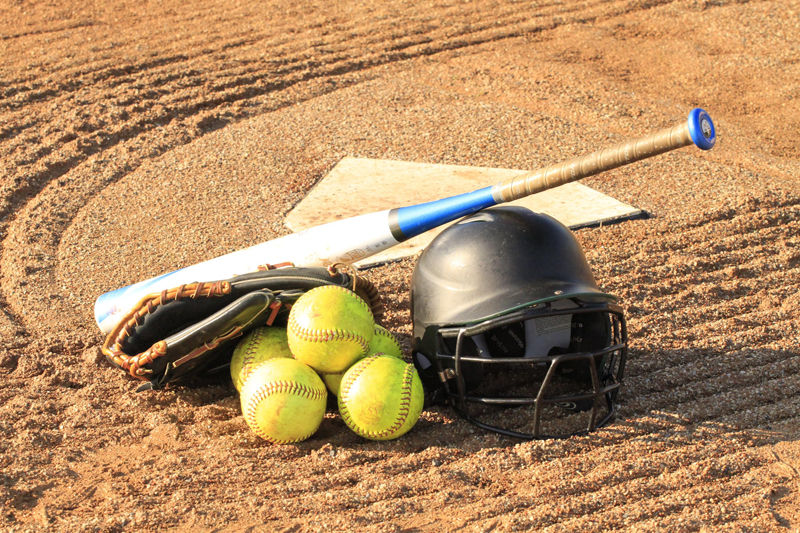ASA Rules on Softball Overthrows

I had an interesting email exchange with one of my readers about what happens in Softball when a ball goes out of play. He was a long time Little League coach who is now coaching girls’ softball for the first time. Of course, he is LOVING coaching the girls – I have not met a single coach who has coached both boys’ baseball and girls’ softball who did not enjoy coaching girls’ softball at least as much as coaching boys’ baseball (most, including myself, would much rather coach the girls than the boys, but that is a topic for another day). Anyway, he had an overthrow happen in one of his recent games and noticed that the bases awarded seemed to be different than they would have been in Little League baseball.
In Little League baseball, if a ball is overthrown out of play, the runners advance two bases from the base at which they started when the pitch was delivered. So if a runner is on first when the ball is pitched and the ball ends up going out of play, he is advanced to third base no matter where he was in the base paths when the throw resulting in the ball going out of play occurred. If the batter put the ball in play in this example, then he would advance to second base since he started the pitch at home plate.
The reader noted that in his game, the runner on first had rounded second and the batter had already touched first when the ball when out of play. By Little League rules, the runner on first should have been advanced to third and the batter to second. However, the umpires in the softball game advanced the base runner home and the batter to second. He was wondering, “What gives?”
The answer is found in ASA Rule 8, section G, which states
“Runners are entitled to advance without liability to be put out when the ball is overthrown or blocked (out of play).
Effect: All runners shall be awarded two bases. The award shall be governed by the position of the runners when the ball left the fielder's hand."
The umpire judged that the base runner had already reached second base but the batter had not yet reached first base when the fielder threw the ball. The two-base award would therefore give the runner home and the batter only second base.
I can understand the logic behind the Little League rule. With one umpire especially, it would be next to impossible to track where runners were when the ball left a fielder’s hand, particularly if there were multiple runners on base. Granting two bases from the runner’s location at the pitch makes the job easier and potentially less subjective than the ASA Rule. That said, I like the ASA rule better, as it rewards speed and encourages more risk taking on the bases. Speed on the bases is part of what makes softball exciting, so we would expect ASA to reward speed where it can.
In Little League baseball, if a ball is overthrown out of play, the runners advance two bases from the base at which they started when the pitch was delivered. So if a runner is on first when the ball is pitched and the ball ends up going out of play, he is advanced to third base no matter where he was in the base paths when the throw resulting in the ball going out of play occurred. If the batter put the ball in play in this example, then he would advance to second base since he started the pitch at home plate.
The reader noted that in his game, the runner on first had rounded second and the batter had already touched first when the ball when out of play. By Little League rules, the runner on first should have been advanced to third and the batter to second. However, the umpires in the softball game advanced the base runner home and the batter to second. He was wondering, “What gives?”
The answer is found in ASA Rule 8, section G, which states
“Runners are entitled to advance without liability to be put out when the ball is overthrown or blocked (out of play).
Effect: All runners shall be awarded two bases. The award shall be governed by the position of the runners when the ball left the fielder's hand."
The umpire judged that the base runner had already reached second base but the batter had not yet reached first base when the fielder threw the ball. The two-base award would therefore give the runner home and the batter only second base.
I can understand the logic behind the Little League rule. With one umpire especially, it would be next to impossible to track where runners were when the ball left a fielder’s hand, particularly if there were multiple runners on base. Granting two bases from the runner’s location at the pitch makes the job easier and potentially less subjective than the ASA Rule. That said, I like the ASA rule better, as it rewards speed and encourages more risk taking on the bases. Speed on the bases is part of what makes softball exciting, so we would expect ASA to reward speed where it can.
BellaOnline Softball Subject List: Coach´s Box, Health & Medical, History of Softball, International Softball, Organizations, Parents , Professional Softball, Reviews, Rules & Regulations, Scorekeeping, Stats & Analysis, Travel Ball |
This site needs an editor - click to learn more!
You Should Also Read:
Appeal Plays in Softball
The Dropped Third Strike in Softball
Related Articles
Editor's Picks Articles
Top Ten Articles
Previous Features
Site Map
Content copyright © 2023 by Don McKay. All rights reserved.
This content was written by Don McKay. If you wish to use this content in any manner, you need written permission. Contact
BellaOnline Administration
for details.


